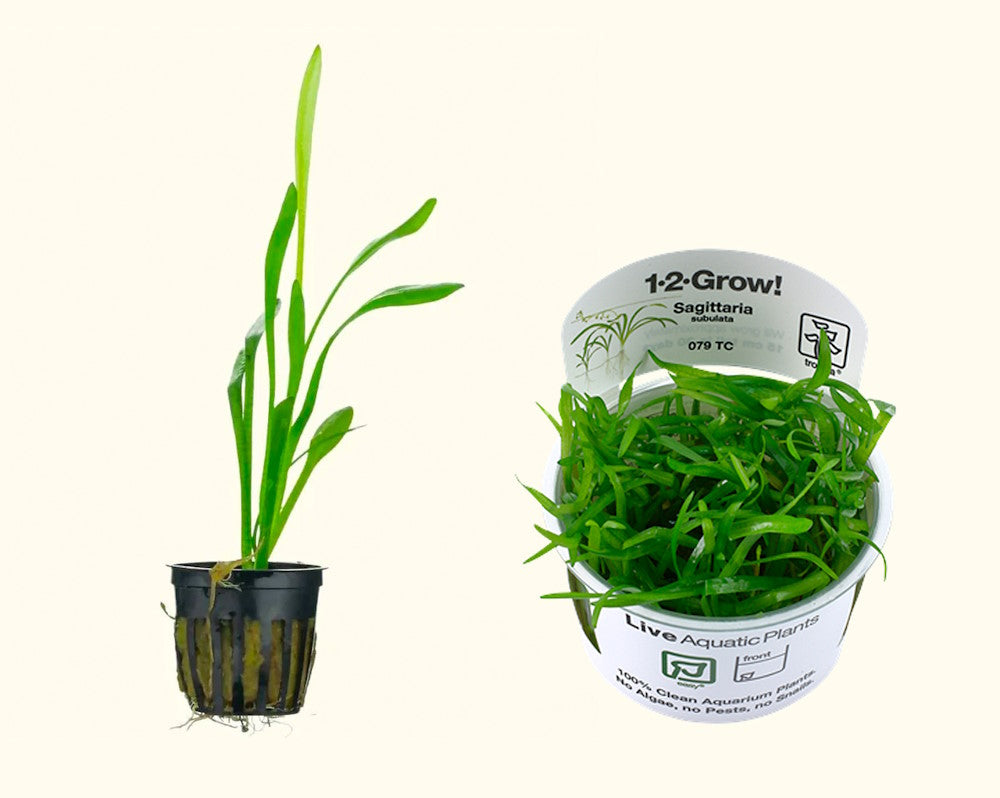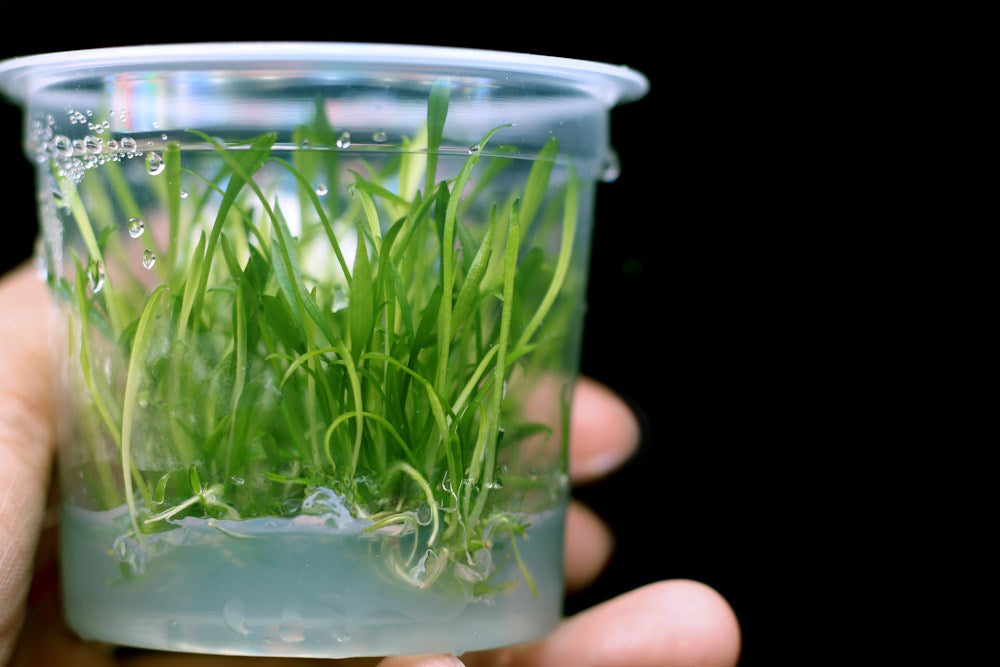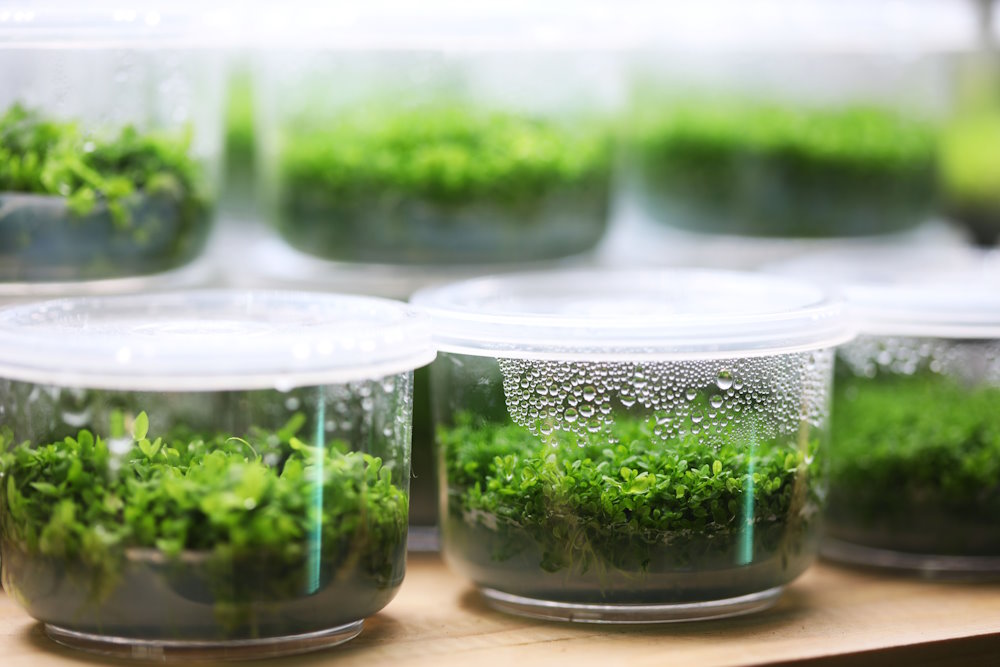Everything You Need to Know About Tissue Culture Aquarium Plants
Are you curious about tissue culture plants and what their benefits and drawbacks might be? Let’s talk about the process of how tissue culture plants are produced and whether or not they are the right choice for your next planted aquarium.
What are Tissue Culture Plants?
The term “tissue culture” (sometimes called “in vitro” or “lab-grown”) sounds a little intimidating and scientific, but it is not too complicated once you break it down. In order to create a tissue culture plant, the facility or laboratory does the following:
- Cut off a tissue sample or part of an existing plant.
- Add the plant part to a sterile liquid medium containing nutrients, vitamins, and plant growth hormones. (Older methods may use a gel medium.)
- The plant sample absorbs the nutrients and grows into a clone of the original plant.

Tissue culture process where small plant pieces being placed on nutrient-rich medium
These steps are similar to traditional ways of propagating a plant, such as planting seeds or cutting and replanting stems. However, tissue cultures have a few advantages that are attractive to fishkeepers. For example, growing healthy plants in a sterile environment means they are free from pests and pathogens. If a certain plant has a desirable or attractive trait, producing exact copies or clones of the plants ensures that these features are passed down. The tissue culture process is even used in other similar industries, such to mass-produce house or garden plants or to create whole new plants from plant cells that have been genetically modified (e.g., Monstera deliciosa ‘Thai Constellation’ variety).
When it comes to buying aquarium plants, tissue culture might be a great option for your planted tank. However, you might opt for using traditional potted plants instead if the drawbacks outweigh the benefits for you.

Mass production of tissue culture plants growing in a small, sterile lab
The Pros and Cons of Tissue Culture and Potted Plants
The benefits of tissue culture aquarium plants:
Tissue culture aquarium plants are guaranteed to be 100% free from algae, snails, and other pests. This is the perfect scenario if you like your aquarium to be free of snails and want to minimize the risk of adding unwanted plants like duckweed. Tissue culture plants are also easy to prepare before adding them to your tank. They usually come in a liquid medium, which you can just rinse off. Lastly, tissue culture cups contain more plants — although in a smaller size — for a similar price as a potted plant.
The downsides of tissue culture aquarium plants:
Although they have a few benefits, tissue culture plants aren’t perfect. They may experience some melting during the acclimation process to your aquarium. Since these plants come from a sterile environment packed with nutrients, they will have to adapt to their new, non-sterile home in your aquarium and this process might cause them to melt back a bit before taking off. Also, they might be too small for the space you are trying to fill. Typically, tissue culture plants come in a cup that fits in the palm of your hand, so you will have to give these plants a lot of time to grow and fill in completely.

Left to right: Potted plant and tissue culture of dwarf sagittaria (Sagittaria subulata)
The benefits of potted aquarium plants:
Potted plants have the advantage of being quite hardy and robust compared to tissue culture. They come with well-established roots that can absorb nutrients and start building new leaves in your aquarium. Therefore, you may experience less melting with potted plants when adding them to your own aquarium. Additionally, potted plants are generally much larger in size. They will fill out your tank immediately and look great right from the start. For this reason, potted plants are a better choice if you don't want to wait such a long time for your plants to look full and mature.
The downsides of potted aquarium plants:
Potted plants might be carrying snails, snail eggs, algae, duckweed, or other pests. Another drawback is that, depending on the species, you may only get one plant for the price, although it is usually larger than its tissue culture counterpart. Lastly, plants potted in rock wool may be a bit harder to prepare before adding to the aquarium because strong roots make it difficult to remove the rock wool completely.

Crypt parva tissue culture cup
When it comes to selecting your plants, only you can decide which you would rather add to your aquarium. There is no perfect method, and tissue culture isn’t necessarily better than potted plants — they just offer variety on the market.
If you are running an existing low tech setup with low lighting and no CO2, then potted plants may adapt more readily to this environment, especially if they have already been growing submerged under water. In this case, tissue culture plants might have a hard time competing with the already established plants in the tank for light and nutrients.
However, using tissue culture plants makes a lot of sense if you are going to set up a new high tech, fully planted system using CO2 and you want your tank to be clean and sterile. Most tissue culture plants really flourish in new high tech aquariums where they don’t have to compete with other plants for light or nutrients.

Tissue culture aquarium plants in small plastic containers
As a special note, consider opting for tissue culture Bucephalandra species (or buce plants) when possible. Buce in the aquarium trade often comes from a wild source where harvesting plants may harm the local ecosystem and wildlife. This isn’t true for all types being sold, but since it’s hard to distinguish between reputable growers and wild-harvested plants, tissue culture is a great alternative for sustainably purchasing bucephalandra.
To prepare a tissue culture plant to add to your aquarium:
- Remove the lid or cap, and gently pull the plant clump out of the container.
- Rinse it under water to remove any liquid or gel media. (When removing gel, use a bucket or bowl to catch it, and toss the gel into the trash instead of rinsing it down the drain.)
- Break up the plant clump into smaller pieces if desired and plant using tweezers or fingers.
Remember that not all plants should be buried in the substrate, so make sure to read our quick guide on how to plant different types of aquarium plants.




